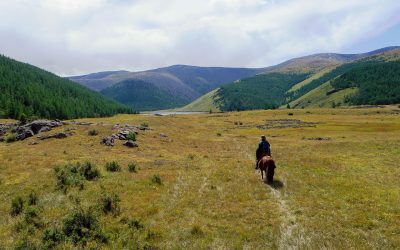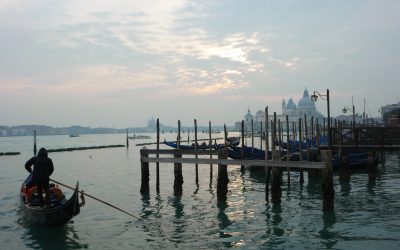In reconsidering the planet’s origin there are ample reasons for ignoring the classical planetesimal scenario; it seems much more likely that the Earth began as a confined nebula sphere of gases enriched in mineral components, transforming into an early terrestrial body through progressive accumulation of essentially small-sized condensates. The transfer of groups of particles from one location in the accreting mass to another would undoubtedly be affected by a number of factors, involving dynamic, magnetic and gravitational forces.
Prior to its final consolidation, the fast-spinning planetary mass underwent a certain degree of internal s centrifugal sorting. Heavier components of the cold proto-planetary cloud, including radioactive elements like Thorium and Uranium, were forced dynamically towards the outer regions where gradual decay of unstable isotopes led to radioactive heating. Magnetic attraction between ferromagnetic particles and clusters led to their coalescence into large and heavy irregular bodies where gravitational forces outweighed dynamic ones. In this way, aggregations of magnetized particles can be expected to have led to the gravitational accretion of the Earth’s core, building up a central body of iron or iron alloys – along with admixtures of hydrogen and a range of other light components.
The temperature effect of the early proto-planetary internal mass segregation produced an outer region heated up by radioactive processes while the deep Earth remained in its initially cold state. However, differential tidal attractions between core and mantle is likely to have led to frictional heating and partial melting within the core-mantle boundary, leading to further transfer of ferromagnetic material into the high-conductivity outer core, while the bulk of the mantle – due to its lower thermal conductivity – is likely to have retained its original cold state. Therefore, due to the inferred relatively low temperatures of at least the bulk of the silica-rich mantle, degassing of the interior can be expected to have been a slow process that is still in progress.
Starting from the new basic precepts of planetary formation – with a relatively cold deep interior and a thick primordial crust, without a Moho or other significant geological/geophysical boundaries – a radical recasting of the current view of Earth evolution is proposed. At the high pressures of the deep interior, the store of hydrogen could have ended up as solid state metalliferous hydrogen or in a variety of mineral combinations including a range of hydrides. In the process of reaching internal stability, mass reorganization will have been at play since the dawn of the planet, giving rise to a progressive evolutionary course of intermittent geodynamic changes and related events of surface geological activity. Internal reorganization of mass would alter the Earth’s spin rate and produce episodic changes of the orientation of the planetary body (polar wander).
The governing idea of the new theory is that the tectonomagmatic development is intimately linked to changes in the Earth’s rotation. Degassing-driven heat and melt production in the topmost mantle has gradually built up an irregular low-velocity asthenosphere. In consequence, the overlying more brittle lithosphere has been prone to detach from the deeper parts, whereby events of latitude-dependent wrench deformation have ensued. The principal tectonic system then becomes one of torsional lithospheric deformation, hence the term Global Wrench Tectonics. Aided by buoyant volatiles, the outer layers of the geosphere were depleted of a number of incompatible and other elements, to be correspondingly enriched in the surface layer, resulting in mineralization, plutonism, greenstone belt volcanism, and pervasive potassium (metasomatic) granitization of the crust. It is envisaged that continual planetary degassing and related reorganization of the interior mass has thinned the crust progressively as well as having successively increased the volume of surface water. The growth of oceanic basins has provided the capacity to house former epicontinental seas and thereby producing dry lands.
The gradual build up of high hydrostatic pressures in the outer layers of the planet led to eclogitization, gravity-driven sub-crustal attenuation, and related isostatic subsidence, eventually (in Mesozoic times) producing the oceanic depressions. Reorganization of internal mass is bound to have altered the Earth’s moments of inertia periodically, instigating changes of planetary spin rate and intermittent events of polar wander. In turn, these dynamical changes set off a range of tectonomagmatic phenomena as well as producing significant palaeoclimatic and biogeographic changes.
It can be inferred that the Archaean Earth had an orientation very close to its present spatial setting, and that “installation” of the initial fabric of the pan-global orthogonal fracture system – with one set parallel and the other set orthogonal to the palaeomeridians – dates from late Archaean time. By this time, the Earth’s surface regions had also cooled significantly. Hence, the hot and ductile state of the early-to-mid Archaean outer shell had been replaced by more brittle conditions. Increasing solidification of the outer layers, combined with cooling and sustained planetary degassing, then led to brittle fracturing.
First of all Archean cooling gave rise to a minor amount of planetary shrinking which, in turn, led to the development of deep great-circle contraction fractures – the disrupted remnants of such an early cooling fracture are to be seen in the present peri-Pacific Benioff system. The Upper Archaean was the time of formation of the greenstone belts, and the massive amount of magmatism associated with these elongated zones of depression – presumably having formed along particular zones of weakness, corresponding to the already established network of orthogonal ruptures – suggests that active upwelling from the uppermost mantle, associated with interior mass reorganization, was in force. Therefore, at some stage, the maximum axis of inertia changed sufficiently to bring about an inevitable spatial reorientation of the planet. Such a resetting of the equatorial bulge, along with a greater polar flattening due to a faster spin velocity at that time (than today), would have produced extensional conditions, notably in intermediate-low palaeolatitudes. This in turn would have given rise to intrusions into the preset orthogonal fracture network with an attendant increase in exhalation of water vapour and gases, such as carbon-dioxide and methane. There are reasons for believing that such a profound change in global dynamics took place at around the Archaean-Proterozoic boundary, loosely dated at ca. 2.5 Gy, heralding a major change in Earth history. From then on, carbonate deposits became more widespread, life became more abundant, major sedimentary basins with banded iron formations developed, and more modern-type tectonomagmatic belts gradually replaced the Archaean greenstone belts.
It is unclear whether the substantial turning over of the Earth’s body that, apparently took place around 2.5 Gy ago, occurred in a single event or had a more protracted stepwise progression. However, Neoproterozoic palaeomagnetic poles from the northern cratonic regions define reasonable clusters at antipodal positions, in south-central Asia and south-eastern Pacific respectively, placing the corresponding palaeoequator along Arctic Canada and the Labrador Sea. This Upper Precambrian palaeoequator further extends along the present-day Central and South Atlantic and the southern Indian Ocean, cuts through Australia (in its pre-Alpine azimuthal orientation), and continues across the northwestern Pacific, before rejoining the Arctic Canada branch. In this tectonic framework, the Franklinian-Innutian belt of Arctic Canada and the Adelaide belt of Australia developed in the palaeoequatorial setting; the remaining part of this great-circle belt has largely been absorbed through crustal thinning and basification processes.
In the Proterozoic, however, crustal ‘oceanization’ had not reached an advanced stage; a brittle pan-global felsic-sialic outer layer was still in existence, and oceanic depressions had not yet passed beyond the embryonic stage. When such a crustal state is seen in conjunction with a relatively fast-spinning planet, inevitably undergoing inertia-imposed recurrent deceleration and acceleration events, it would be expected that significant rifting, with attendant periodic magmatism and superposed wrench deformation, would spread out from the palaeoequator. In this scenario, the Proterozoic tectonomagmatic belts would have developed basically as a consequence of combined rifting and wrench deformation of the late Precambrian continental crust, with anorogenic magmatism featuring between transpressive events (the latter episodes being associated with phases of planetary acceleration). These dynamo-tectonic processes would naturally reactivate and enlarge the pre-existing orthogonal fracture system that had the closest perpendicular orientation with respect to the time-equivalent equator. In this context, it may be noted that younger rifting episodes frequently would have overprinted and reactivated older break-up zones, forming a collage of co-linear structural zones. Such a tectonic architecture is well displayed in cratonic North America where bands of the pre-existing NE-SW trending fracture system were time and time again rendered tectonomagmatically active during the Proterozoic. The Grenville Province and the Western Cordillera of North America, the Sveco-Norwegian belt, Pan-African and Brazilian belts, the Mozambique belt and early East African rifting, and the Transantarctic belt all formed as extensive (thousands of kilometres long) rift structures parallel to time-equivalent meridians. In the new theory of the Earth – the dynamical principles of which initially arose from a reconsideration of palaeomagnetic data – plate tectonic principles are not needed.




